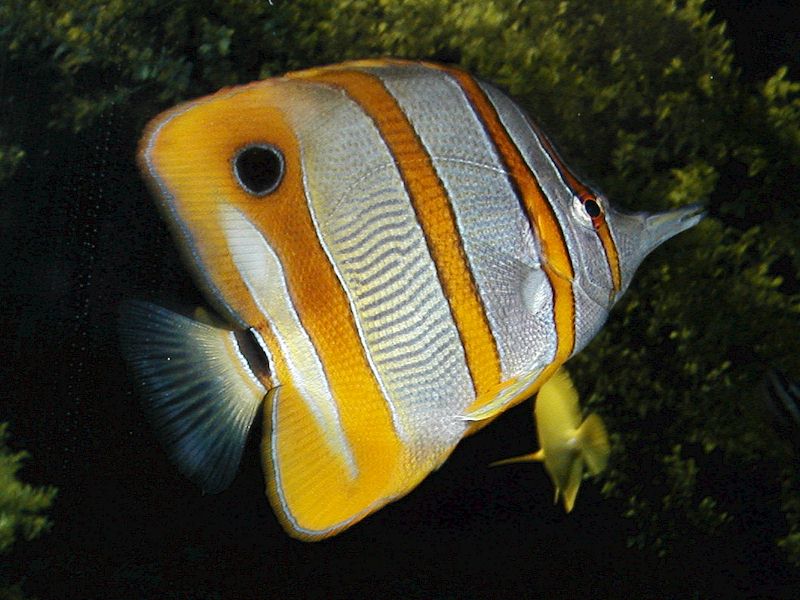
The Copperband Butterflyfish known as Chelmon rostratus as the scientific name. This is one of the most popular among aquarists. Selecting a good specimen and offering it a varried diet are the keys to keeping it successfully.
Size: Males and females up to 7.9 inches.
Feeding: A wide variety of frozen foods should be offered, including shellfish, and particularly mysis shrimp rather then brineshrimp. Supplement with vitamins. If you happen to buy this fish at a LFS, these fish should swim toward you as you pass by the tank and make sure they are eating well before buying.
Location: Eastern Indo-Pacific
Breeding: It’s not going to breed, so don’t get your hopes up.
Tank Size: 120 gallons
Behavior: The Copperband butterflyfish will most likely be harassed by tangs and dwarf angels and surgeonfishes if these are already in the tank when the copperband is introduced. Stock the copperband fish first before any fish could challenge it. It will “head standing” to fend off aggression with its erect dorsal fin spines. This fish is actually more peaceful the longer it is settled in the aquarium.
Word of Caution: Upon seeing emaciation, you should raise the feeding rate and if you are feeding brineshrimp stop and start feeding mysis shrimp which has a higher fat content. It is vital you have the time to closely monitor this species.
Coral compatibility: The copperband butterfly fish will nip at tubeworms but should ignore other species of sessile invertebrate with the exception Aiptasia spp. anemones. Which some aquarists introduce into the aquarium to control this pesky pest. If you are thinking about introducing this fish just to control your aiptaisa problem then your making a mistake if you haven’t considered the other requirements this fish has.



